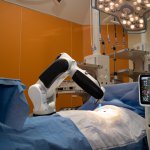
Healthcare providers and medical facilities are employing IoT technology to improve their operations. Source: Shutterstock
IoT is revolutionizing what it means for healthcare to be “smart”
TECHNOLOGY plays a significant role in healthcare. The internet of things (IoT) is one such technology and it brings phenomenal opportunities to the industry in terms of infrastructure and services.
Given the demand for digital solutions from customers, and the need for speed, accuracy, and safety, among other things, IoT is gaining popularity quite quickly.
The technology utilizes sensors implanted or built into infrastructure and devices to collect data, in real-time.
Facility managers, administrators, and even medical professionals, in the healthcare industry, can access this data and use it to better serve their patients and other stakeholders.
Not only that, IoT technology accurately tracks, detects, and displays specific data to allow necessary actions to be taken, making it the perfect ingredient in the development of smart hospitals.
Smart Hospitals are rapidly growing in the Asia-Pacific. The concept has been a key focus in the medical industry for years, and technological advancements have made its establishment more practical and affordable.
Use cases of IoT have shown that it can not only address concerns about the efficiency of working processes, but also improve the security of assets, and ensure the sustainability of services.
For instance, a hospital in East Malaysia has made headlines simply by utilizing IoT to better manage the temperature and humidity level in its premises. Medical facilities are cautious about maintaining the right temperature to ensure patients and visitors are comfortable and at ease.
Too much heat and humidity not only strains the human body, but could also damage medicines, equipment, and infrastructure.
With IoT, maintenance and management staff can work more efficiently and productively as sensors will log data automatically — avoiding manual labor — and notify staff when maintenance is needed.
In terms of asset monitoring and management, IoT makes it easy to ensure the safety and security of expensive medical equipment. It’s an inexpensive, effective and unobtrusive solution to asset security.
Speaking of monitoring, IoT also helps hospital administration track patients and staff on-premise to ensure that they’re at the right place, at the right time.
This is done using simple RFID and other sensor-based tags, bands, and safety accessories, designed for comfort as well as security.
Overall, IoT technology not only provides cutting-edge solutions with a tangible management system, but also paves the way for at-scale digital transformation efforts in the healthcare industry.
With sensors getting cheaper and networks getting stronger, healthcare leaders are bound to explore IoT use cases to transform patient care, facility management, and their business in general.
READ MORE
- Strategies for Democratizing GenAI
- The criticality of endpoint management in cybersecurity and operations
- Ethical AI: The renewed importance of safeguarding data and customer privacy in Generative AI applications
- How Japan balances AI-driven opportunities with cybersecurity needs
- Deploying SASE: Benchmarking your approach


